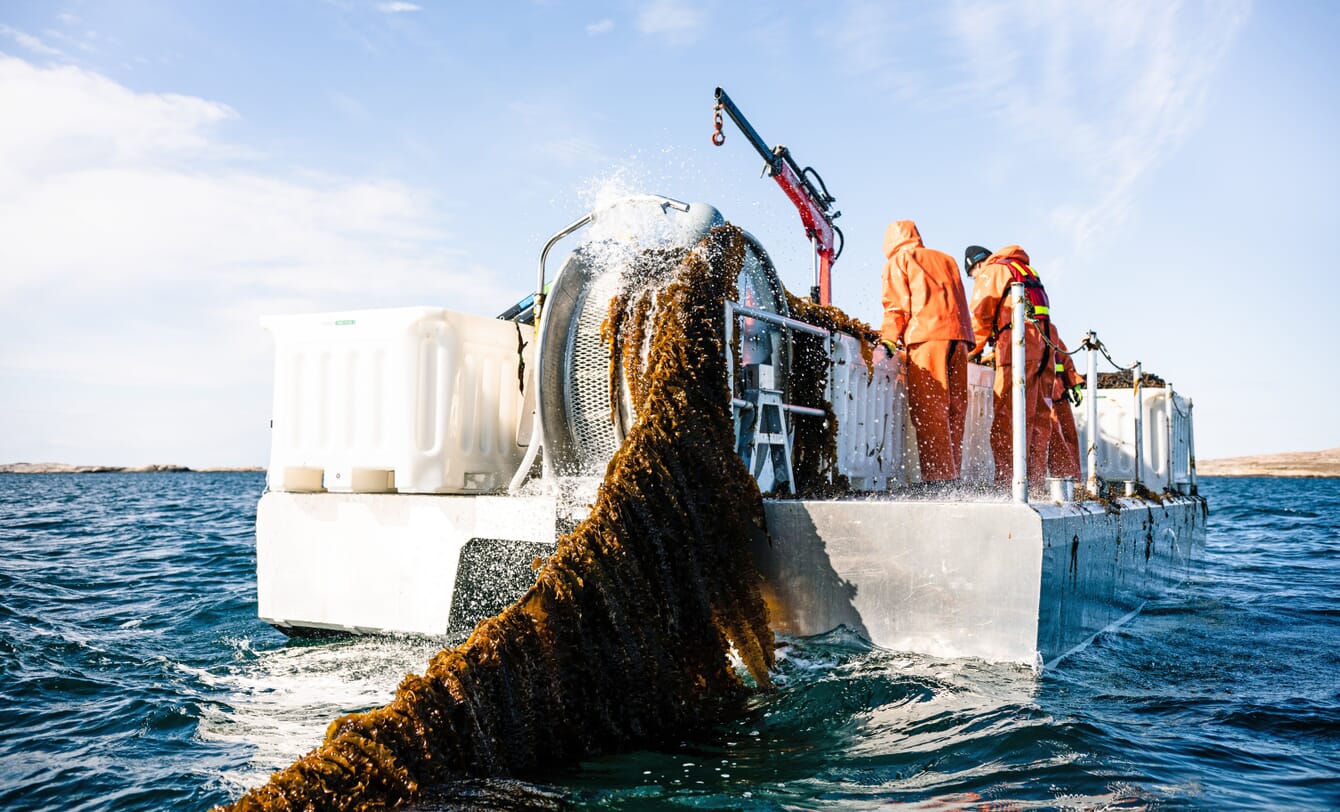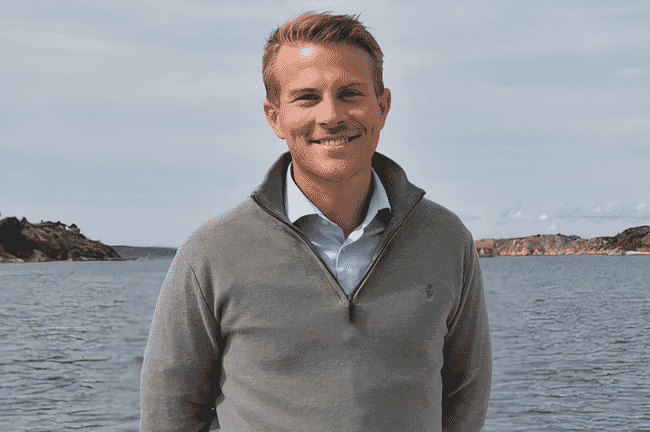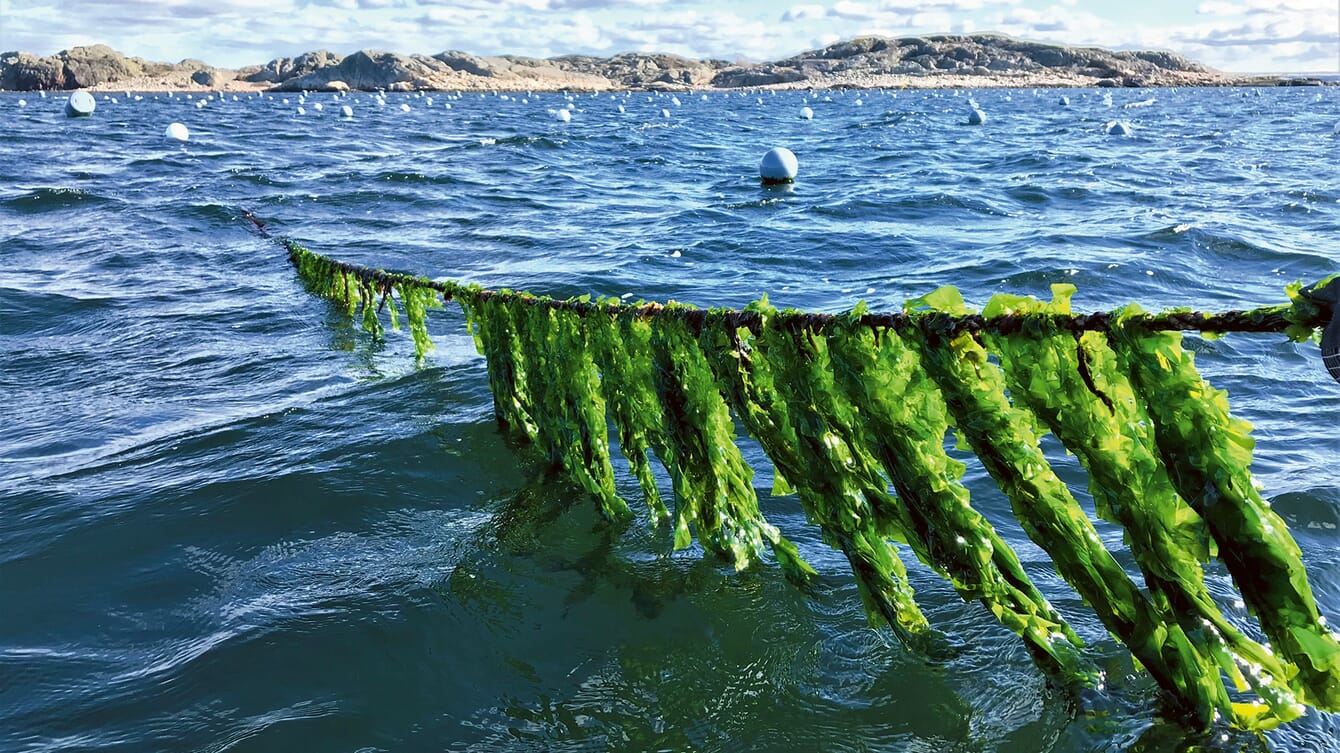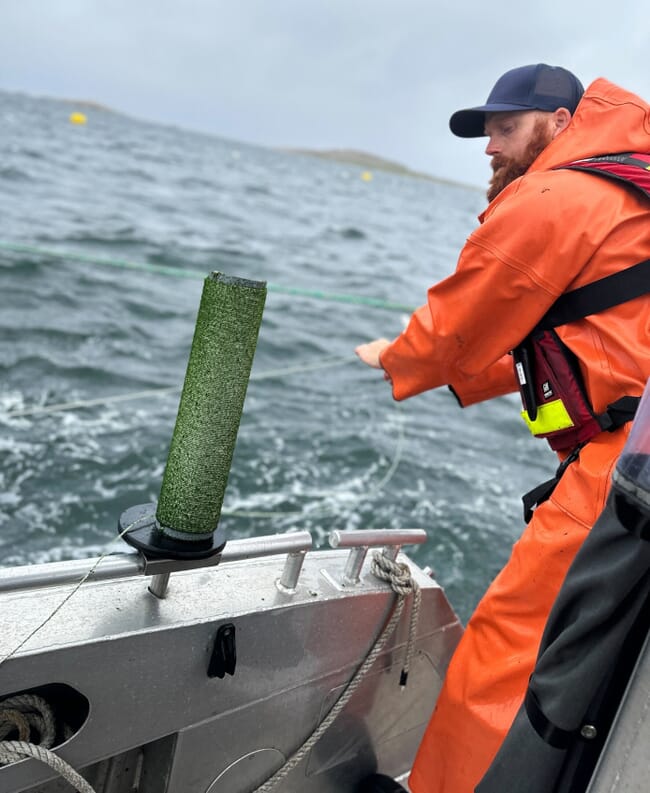
Nordic Seafarm are currently utilising about 8 hectares of the 30 hectares they have been granted a licence to grow seaweed in, meaning there’s scope to scale up to around 400 tonnes within their existing sites © Nordic Seafarm
Despite growing up on Sweden’s west coast, Johansson’s true introduction to the aquaculture sector came in 2017, when he was employed as a strategy consultant in Oman – where fish, mussel and seaweed farms were being developed.
“Our mission there was to take the best aquaculture ideas from both Asia and Europe and see what could be scaled up in the Middle East. It opened my eyes to what aquaculture can do and also to the value of taking inspiration from other parts of the world,” he reflects.
On his return in 2019 Johansson decided to investigate opportunities in Sweden and, teaming up with a number of seaweed experts, helped to commercialise a fledgling company which is now known as Nordic Seafarm.
“It was essentially a research project between 2016 and 2019. It had had customers since 2017, but from 2020 when I joined we started to explore opportunities with higher commercial potential within the value chain,” he explains.
This involved a combination of experimentation with seaweed processing and stepping up the marketing of their seaweed products.
“It’s one thing trying to sell things that people know of, but for new innovations you need to work a bit more on the business model and how to add value to your products,” Johanssen reflects.

After working in aquaculture in Oman, Johansson returned to his homeland in 2019 and helped to commercialise a fledgling company, now known as Nordic Seafarm © Nordic Seafarm
Milestones
Since 2020 the company has made considerable progress. Notably in terms of its success in ramping up production, to around 100 tonnes a year. Most of this is sugar kelp, but – more recently – they have had major breakthroughs in terms of line-grown Ulva (sea lettuce) with production of this species expected to reach 30 tonnes this year.
“It contains more protein than kelp – 25-30 percent of its dry matter – and there are no issues with too much iodine. Both chefs and consumers really like it too,” Johansson explains.
They are also experimenting with line-grown dulse.
“We’ve seeded a couple of hundred metres this year but we think we’ve now cracked some kind of code and we will see how it grows and whether we can scale it up next year,” notes Johansson.
Between the three species they are currently utilising about 8 hectares of the 30 hectares they have been granted a licence to grow in, so there’s scope to scale up to around 400 tonnes within their existing sites. And, according to Johansson, they are also looking at other sites for as and when the market has developed sufficiently.

The company has had major breakthroughs in terms of line-grown Ulva (sea lettuce) with production of this species expected to reach 30 tonnes this year. © Nordic Seafarm
Processing breakthroughs
The company has also made progress in terms of processing and they now offer seaweeds that have been preserved via a range of processes, thus making them suitable for different applications.
Processes implemented include drying, blanching, freezing, salting and fermenting. But, in order to achieve such a range, they have opted to work with local food specialists and industries, including a herring processor, who already has the necessary facilities up and running, thereby helping to reduce the capex required by Nordic Seafarm.
“Teaming up with people with existing assets that we can more or less rent for the short period after we harvest the seaweed is crucial – it keeps us asset light and we also get a really high quality product,” Johannson reflects.
The third main focus has been on the market and the product development side of the business.
“We recently created a joint venture, called Ocean Next, for the food sector. We provide high quality seaweed and our partner, Ocean Collective, develops products with it. It works for us because we are better placed to focus on the upstream side of the business – R&D and cultivating seaweed on a big scale – while going into retail and really being world class takes another set of capabilities,” explains Johannson.
It's a system that works for Nordic Seafarm and is very much in line with their collaborative approach, which also extends to seaweed production methods.
“We work with one of Norway’s main seaweed producers to share product development, how to increase yields and improve processing. The industry is still so small that we need to work together to compete with other food sources that are less sustainable. At least for now, but hopefully in 10 years other seaweed producers will be big competitors on a global market!,” he observes.

Although kelp is currently the best species to grow from an environmental viewpoint, Johansson believes the company should produce more Ulva, Palmaria and Gracilaria so they can develop a wider range of offerings © Nordic Seafarm
Applications
While Nordic has primarily focused on the food sector so far, Johannsen sees opportunities elsewhere too.
“Seaweed is a versatile crop which can be used for many things – biomaterials, animal feeds, biostimulants – so we’re exploring what the next steps should be. We’ve had proposals from those segments and are evaluating which ones to double down on, but it takes a lot to penetrate new market segments,” Johansson explains.
Most of their business is currently done in Sweden, while the rest of Scandinavia and northern Europe also account for significant proportions of their 60 or so customers.
Challenges
Johansson believes there’s still much work to be done – especially in terms of product development and growing the market.
“We have the challenge of expanding from high end restaurants into wider food service markets and also retail products and into other European countries. We had over 60 paying customers this year, but we can still produce more seaweed than we can sell,” he notes.
However, there is also an argument for increasing production given that one or two major food companies have approached Nordic Seafarm.
“We are in some interesting dialogues with large actors in the food sector, who see us as currently being too small to fulfill their orders,” Johansson explains.
Meanwhile, from a farming perspective he notes that there’s room for improvement in terms of “optimising yields, reducing the cost of production, scaling up and in a cost-efficient way and having more automated harvesting processes”.
Funding
According to Johansson the company has so far been funded through a combination of grants, €3-4 million worth of investment from shareholders – including the Stena family, best known for their ferries – and revenues from the sales of its products. “Although from modest levels, we’ve doubled sales every year since 2020 but still need to scale a bit more and we are currently in the middle of raising a round of €2.5 million. We now have one lead investor covering around €1 million so we’re on track and aim to close it by the end of February,” he explains.
The evolution of the industry
Looking ahead Johansson believes that product development should be one of the key areas for the sector to focus on, and that there’s huge scope to investigate farming a greater range of species too.
“I think kelp is currently the best species to grow from an environmental viewpoint: it absorbs a lot of CO2 equivalents and produces good yields, but it has its limitations, such as its high iodine content, so I think we should develop more Ulva, more Palmaria and more Gracilaria so we can develop a wider range of offerings for even more end uses in the market,” he argues.
Meanwhile, in terms of the evolution of the company itself?
“Hopefully in 5-10 years time we’ll be the biggest seaweed cultivator in Europe, working with larger actors with an even more upstream focus – growing a lot of seaweed in the ocean is how we can have the greatest impact and do the ocean a favour,” Johansson explains.
And it seems like the Swedish authorities are taking an enlightened approach to macroalgal aquaculture.
“In Sweden the legislation is good for those businesses that are good for the environment – regulators say ‘no’ to fish farms but ‘yes’ to seaweed farms and our mapping shows that there’s scope to grow at least 10,000 tonnes of seaweed in nearshore locations on Sweden’s west coast. There’s plenty of room to grow in a safe and good way before we need to go to new places or new countries,” Johansson concludes.




